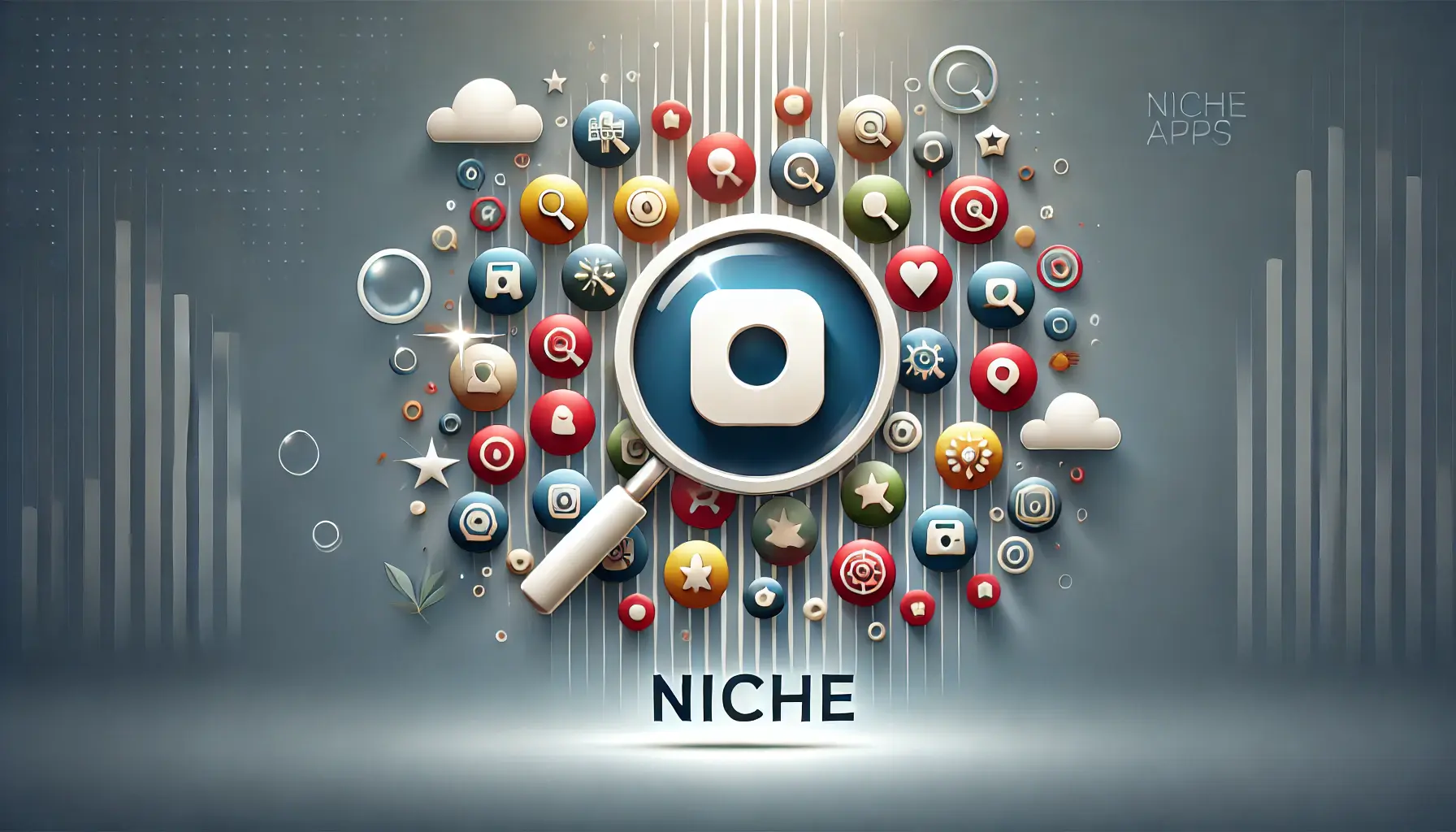In today’s digital era, standing out in the sea of professionals is challenging.
But LinkedIn gives you a unique platform for niche targeting so that you can directly connect with your target audience.
By concentrating on a specific segment, you can create stronger relationships, improve engagement, and ultimately succeed in your career.
- Understanding Niche Targeting on LinkedIn
- Optimizing Your LinkedIn Profile for Your Niche
- Creating Content that Resonates with Your Niche Audience
- Leveraging LinkedIn’s Advanced Search and Networking Capabilities
- Measuring and Refining Your Niche Targeting Strategy on LinkedIn
- Mastering LinkedIn Niche Targeting for Long-Term Success
- Frequently Asked Questions About Niche Targeting on LinkedIn
Understanding Niche Targeting on LinkedIn
Before we talk about strategies, let’s discuss what niche targeting is on LinkedIn.
It’s actually about focusing your efforts on a specific, well-defined subset of the professional network.
This could be by industry, job function, geography, or even particular interests and skills.
By segmenting, you position yourself to be able to speak to the specific challenges and requirements of that audience, making your engagement more meaningful and effective.
Defining Your Target Audience
Okay, let’s get down to basics: Who are you really trying to target?
Ask yourself the following:
- Industry: Are you targeting professionals in tech, healthcare, finance, or another industry?
- Job Function: Are you looking to engage with marketers, engineers, or perhaps C-level executives?
- Geographic Location: Is your target audience local, national, or international?
- Skills and Interests: Are there specific skill sets or topics that define your niche audience?
By making these parameters clear, you lay the foundation for effective niche targeting on LinkedIn.
Strengths of Niche Targeting in Professional Networking
Having a niche audience comes with several advantages:
- Less Competition: With a narrower focus, you’re competing with fewer individuals or firms, increasing your visibility.
- Higher Engagement: Content tailored to a specific audience resonates more, leading to increased likes, comments, and shares.
- Stronger Relationships: Engaging with a targeted group fosters deeper connections and trust over time.
- Improved Conversion Rates: When your message aligns closely with your audience’s needs, they’re more likely to take action, such as reaching out or responding to your calls to action.
By embracing niche targeting on LinkedIn, you position yourself to build a more receptive and engaged professional network, paving the way for new opportunities and career growth.
Niche targeting on LinkedIn allows professionals to focus their efforts on a specific audience, leading to higher engagement and meaningful connections.
Optimizing Your LinkedIn Profile for Your Niche
To effectively implement niche targeting on LinkedIn, your profile needs to be optimized to attract your desired audience.
A well-crafted profile not only showcases your expertise but also helps you build the right type of connections within your niche.
Crafting a Compelling Headline and Summary
Your headline and summary are the most critical parts of your LinkedIn profile.
They need to clearly convey your professional brand and value proposition to your target market.
- Headline: Craft a one-sentence headline that promotes your specialty and differentiates your value proposition to your target market. Instead of a generic title like “Marketing Specialist,” consider “B2B Content Strategist Helping Tech Startups Grow.”
- Summary: Write a compelling summary that delves deeper into your professional background, emphasizing experience and skills that are directly relevant to your niche targeting strategy. This section should showcase your passion and how you are ideally suited to address the specific needs of your target market.
Incorporating keywords from your niche into your profile increases your LinkedIn search visibility, making it easier for your target market to find you.
Emphasizing Relevant Skills and Experience
Highlighting your niche-relevant skills and experiences is essential in building your credibility within your industry.
- Experience: Document your professional history, highlighting jobs and projects that align with your niche targeting goals. Emphasize achievements and responsibilities that demonstrate your expertise and value to your industry.
- Skills: List skills that are highly valued in your niche. Peer recommendations and endorsements can further validate your expertise in these skills.
Regularly updating your profile with new accomplishments and skills keeps it current and ensures it continues to showcase your professional growth within your industry.
By optimizing your LinkedIn profile strategically, you position yourself as a seasoned and trustworthy professional within your niche, attracting the right connections and opportunities.
A well-optimized LinkedIn profile enhances visibility within your niche and attracts the right connections for professional growth.
Creating Content that Resonates with Your Niche Audience
To capture the attention of your niche audience on LinkedIn, you need a well-planned content creation strategy.
By sharing tailored content, you can establish authority and build strong relationships within your niche community.
Choosing Subjects of Interest
To engage your niche audience, focus on topics that address their concerns and challenges:
- Carry Out Audience Research: Use LinkedIn analytics and feedback tools to understand your audience’s interests, preferences, and pain points.
- Follow Industry Trends: Stay updated on the latest developments in your niche to provide timely and relevant content.
- Join Niche Communities: Engage in LinkedIn groups and discussions to gain insights from real conversations and industry-related topics.
By aligning your content with these insights, you create content that deeply resonates with your audience and encourages meaningful engagement.
Utilizing Appropriate Content Formats
Different content formats can help effectively reach and engage your niche audience on LinkedIn:
- Articles and In-Depth Posts: Share detailed analysis and industry insights to position yourself as a thought leader.
- Videos: Create engaging video content, such as tutorials or interviews, to simplify complex information and enhance audience engagement.
- Infographics: Use visually appealing graphics to summarize data and highlight key points in a digestible format.
- Polls and Surveys: Interact with your audience and gather valuable feedback through interactive content.
Experimenting with different formats allows you to discover what works best for your audience, ultimately improving engagement and strengthening relationships.
By focusing on relevant topics and utilizing diverse content formats, you can successfully engage your niche audience on LinkedIn, establish stronger professional connections, and position yourself as an industry expert.
Consistently producing relevant and valuable content helps establish authority and foster engagement within your niche.
Leveraging LinkedIn’s Advanced Search and Networking Capabilities
To effectively implement niche targeting on LinkedIn, it’s essential to utilize the platform’s advanced search and networking capabilities.
These features allow you to connect with the right professionals and engage in communities related to your industry.
Utilizing Filters to Discover Prospective Connections
LinkedIn’s search function enables you to refine your search parameters to identify potential connections within your niche.
Here’s how you can make the most of these features:
- Advanced Search Filters: Apply filters such as location, industry, current and past companies, profile language, and education to narrow down your search results. This level of specificity helps you identify professionals who align closely with your niche targeting strategy.
- Boolean Search: Use Boolean operators like AND, OR, and NOT to create highly targeted search queries. For example, searching for ‘”content strategist” AND “tech industry”‘ will return profiles that include both terms, enhancing the specificity of your search.
- Sales Navigator: Consider using LinkedIn’s Sales Navigator for access to advanced search capabilities, including additional filters like company size and seniority level, which can further refine your results.
By strategically using these sophisticated search mechanisms, you can identify and reach out to professionals most relevant to your field of interest.
Participating in the Right Groups and Communities
Joining LinkedIn Groups related to your industry or interests is a smart way to expand your network and establish authority within your niche.
Here’s how to do it effectively:
- Joining the Right Groups: Use LinkedIn’s search feature to find groups related to your professional interests. Joining active groups provides insightful information and networking opportunities.
- Active Participation: Engage with group members by sharing valuable insights, asking questions, and offering constructive feedback. Consistent participation can position you as a thought leader in your field.
- Networking Opportunities: Connect with group members who share similar interests or career goals. Building relationships within these communities can lead to collaborations and career growth.
By leveraging LinkedIn’s advanced search tools and actively engaging in relevant groups, you can effectively implement niche targeting, strengthening your professional network and establishing your reputation within your industry.
Using advanced search filters and joining niche groups helps you connect with the right professionals and expand your network.
Measuring and Refining Your Niche Targeting Strategy on LinkedIn
A successful niche targeting strategy on LinkedIn must be continuously measured and refined.
Tracking key performance indicators (KPIs) enables you to assess the effectiveness of your approach and make necessary adjustments to improve engagement and reach with your target audience.
Defining Clear, Measurable Goals
Start with well-defined, quantifiable goals using the SMART frameworkA goal-setting approach that ensures objectives are Specific, Measurable, Achievable, Relevant, and Time-bound.—Specific, Measurable, Achievable, Relevant, and Time-bound.
This structured process guides your content and engagement strategies, ensuring they align with your business objectives.
Using LinkedIn Analytics
LinkedIn Analytics provides valuable insights into your profile’s performance and audience interaction.
Key metrics to monitor include:
- Profile Views: Indicates the number of individuals who have seen your profile, reflecting your visibility on the platform.
- Post Impressions and Engagement: Tracks how many people view your posts and how they interact through likes, comments, or shares, illustrating the effectiveness of your content.
- Follower Demographics: Provides insights into your followers’ industries, job titles, and locations, allowing you to tailor your content to their interests.
Regularly reviewing these statistics helps you identify trends and determine whether your content is engaging your target audience effectively.
Refining Your Target Audience
Using the data collected, refine your target audience to ensure your content reaches the most relevant professionals.
This may involve adjusting your content strategy to better align with the interests and needs of your niche market.
Continuous Improvement
Adopting a mindset of continuous improvement is essential for maintaining an effective niche targeting strategy.
This includes:
- Adjusting Content: Modify your content topics, formats, or posting schedules based on engagement metrics to better meet your audience’s preferences.
- Experimenting with New Approaches: Test different types of content or engagement strategies to discover what works best for your niche audience.
- Monitoring Industry Trends: Stay informed about industry developments to ensure your content remains relevant and valuable to your audience.
By continuously tracking and refining your niche targeting efforts on LinkedIn, you can enhance your professional presence, build stronger connections, and achieve your marketing goals within your target audience.
Regularly analyzing LinkedIn metrics is crucial for refining your strategy and ensuring continuous improvement in engagement and visibility.
Mastering LinkedIn Niche Targeting for Long-Term Success
To effectively utilize niche targeting on LinkedIn, you must take a strategic approach that includes profile optimization, content creation, advanced search techniques, and ongoing performance monitoring.
By following the step-by-step process outlined in this guide, you can establish yourself as an expert in your field and build strong professional relationships.
Key Takeaways for Successful Niche Targeting
- Optimize Your Profile: A well-crafted LinkedIn profile tailored to your niche audience enhances your visibility and credibility.
- Create High-Quality Content: Engaging and relevant content strengthens your authority and fosters deeper relationships with your target audience.
- Leverage LinkedIn’s Advanced Features: Using search filters, Boolean search, and LinkedIn Groups helps you connect with the right professionals.
- Track and Adjust Your Strategy: Regularly reviewing LinkedIn analytics ensures that you continuously optimize your approach based on audience engagement and industry trends.
Maintaining Growth Through Niche Targeting
Building a strong presence within a niche on LinkedIn is not a one-time effort—it requires continuous refinement and adaptation.
The platform’s algorithms, audience behavior, and industry trends evolve constantly, making it essential to remain proactive in your approach.
Here are some long-term strategies for sustaining your niche targeting success:
- Stay Active and Consistent: Regular posting, interaction, and networking help maintain your relevance within your niche community.
- Experiment with New Content Formats: Test different content formats, such as live sessions, interactive polls, and carousel posts, to see what resonates best with your audience.
- Build a Solid Professional Network: Continue developing meaningful connections by engaging with key influencers, industry peers, and niche-specific groups.
- Keep Up with Market Trends: Stay informed about LinkedIn trends and industry updates to ensure your strategy remains relevant and effective.
Final Thoughts
By mastering niche targeting on LinkedIn, you gain a competitive edge in reaching the right audience, increasing engagement, and positioning yourself as a thought leader.
Whether you’re a business owner, marketer, or job seeker, understanding how to refine and adapt your approach will set you apart from the competition.
Now is the time to implement these strategies, test different techniques, and continuously refine your niche targeting approach.
The more specific and tailored your strategy is, the stronger your professional presence on LinkedIn will become.
Sustaining long-term success in niche targeting requires consistency, adaptability, and a strong understanding of industry trends.
Enjoyed the article? Let its author handle your social media ads. Visit our service page to get started!
Frequently Asked Questions About Niche Targeting on LinkedIn
Niche targeting on LinkedIn refers to focusing your marketing efforts on a specific, well-defined segment of the professional network, such as industry, job function, or geography, to reach a more relevant audience.
Identify your niche by evaluating your career goals, interests, and skills, then align them with market demands.
This alignment helps in effectively targeting the right audience within your industry.
Niche targeting is essential because it enables you to engage with a highly relevant audience, leading to increased interaction, meaningful connections, and improved conversion ratesThe percentage of users who take a desired action after engaging with content or an advertisement..
Optimize your profile by crafting a compelling headline and summary that highlight your expertise, incorporating relevant keywords, and showcasing skills and experiences tailored to your niche.
Create content that aligns with the interests and needs of your niche audience, including industry updates, expert insights, tips, case studies, or thought leadership articles that provide value.
Leverage LinkedIn’s advanced search filters, join relevant groups, and actively engage with niche-specific content to connect with the right professionals and grow your network.
Assess the success of your strategy by tracking key performance indicators such as profile views, post engagement, and audience demographics using LinkedIn Analytics.
Although niche targeting focuses on a specific audience group, it drives higher engagement and conversion rates, making your LinkedIn efforts more effective despite a potentially smaller reach.
Regularly refine your approach by analyzing LinkedIn performance data, gathering audience feedback, and staying updated with industry trends to ensure continuous effectiveness.











